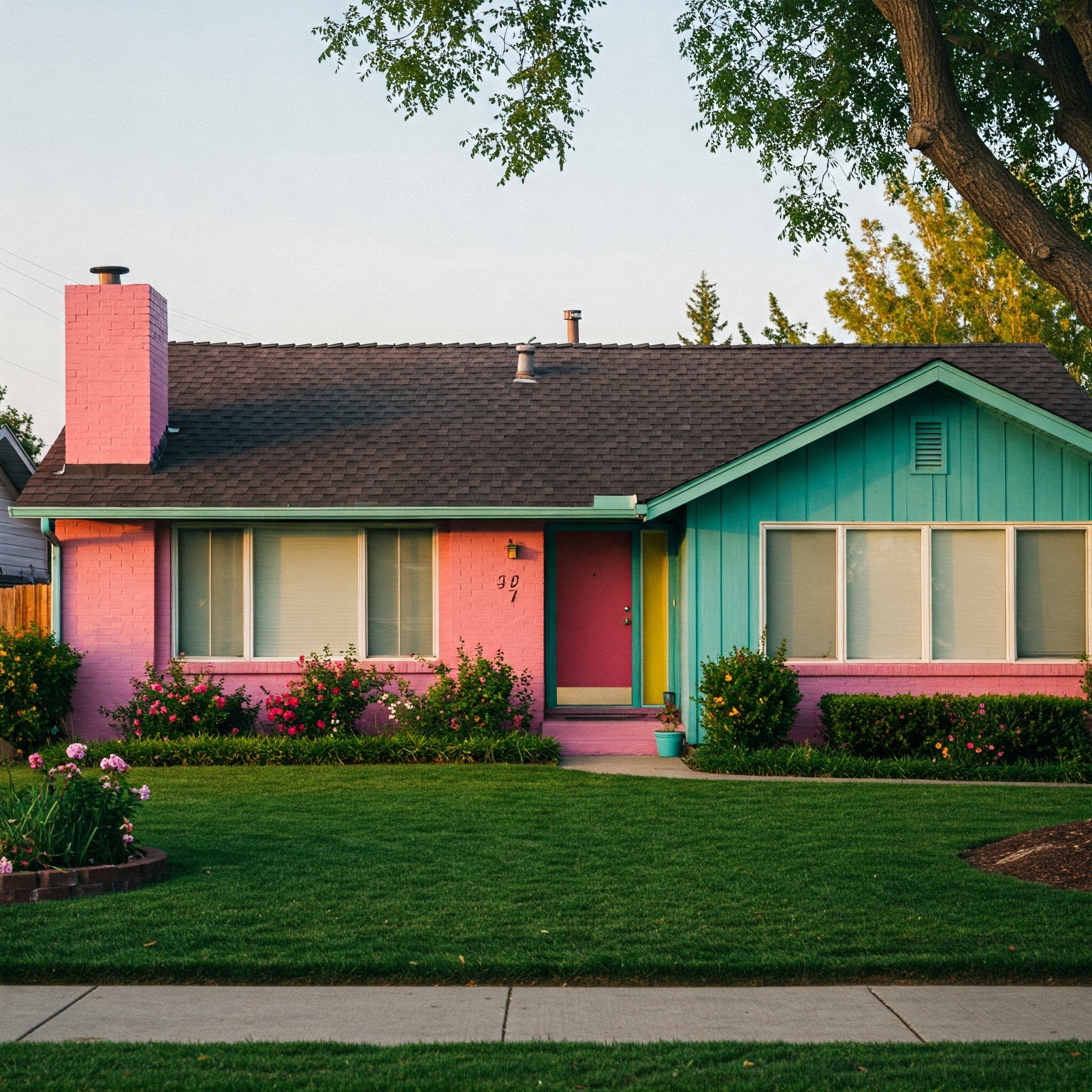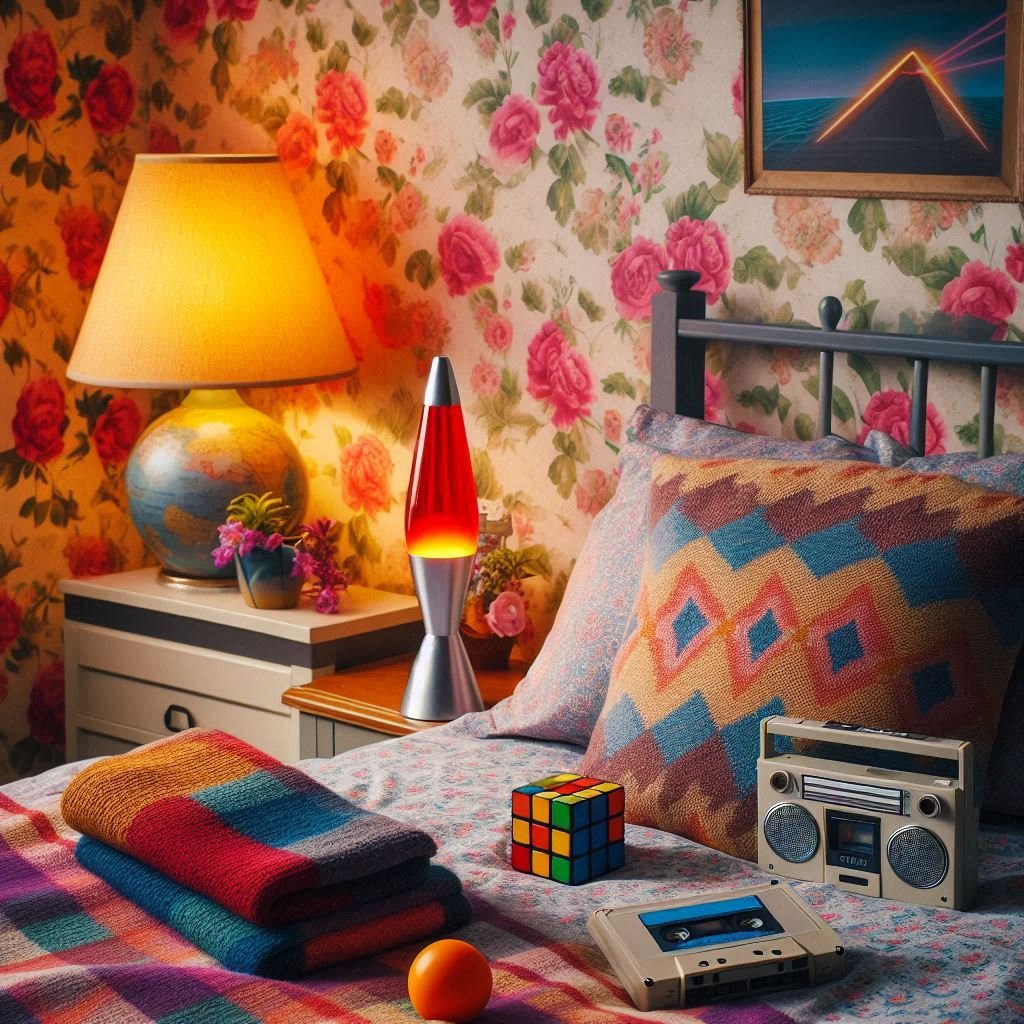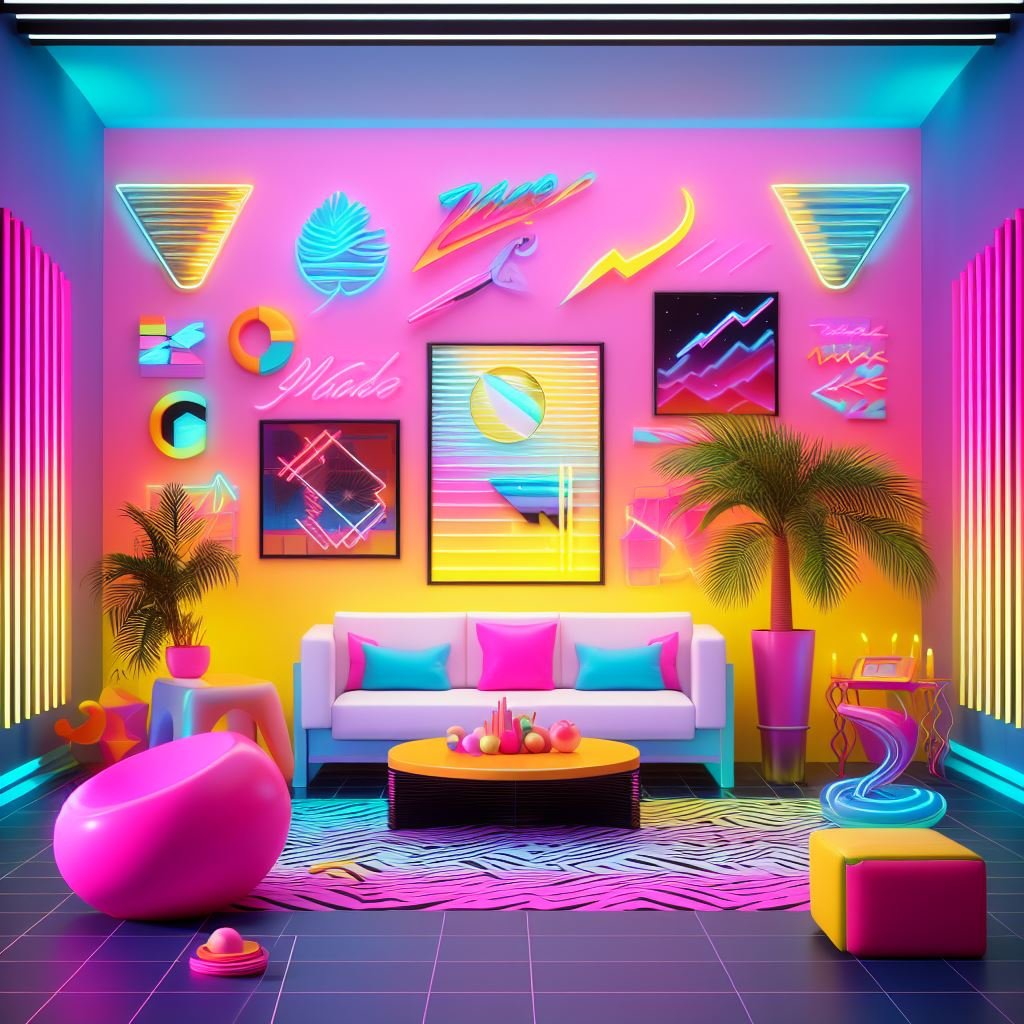15 80s Bathroom Ideas for a Retro Revival
Transform your bathroom with these 15 authentic 80s-inspired design ideas blending vintage appeal with modern functionality for the ultimate retro revival.
Remember the days when bathroom design wasn't afraid to make a statement? The 1980s marked an era of bold choices, unapologetic colors, and design elements that screamed personality rather than whispered minimalism. Today's bathrooms often play it safe with neutral palettes and clean lines, but there's something undeniably magnetic about the exuberant charm of 80s design that keeps pulling us back. Perhaps it's nostalgia for a simpler time, or maybe it's the realization that bathrooms don't have to be sterile, soulless spaces devoid of character. Whatever your motivation, incorporating elements of 80s design into your modern bathroom creates a space that feels both refreshingly different and comfortingly familiar. The beauty of revisiting this distinctive decade lies in the ability to cherry-pick the most appealing aspects while leaving behind the questionable choices (goodbye, wall-to-wall carpet in bathrooms!). In this guide, I'll walk you through 15 inspired ways to infuse your bathroom with authentic 80s flair that feels fresh rather than dated. Get ready to transform your bathroom into a conversation piece that perfectly balances nostalgic charm with contemporary functionality!
1. Embrace Bold Geometric Patterns
The 80s never whispered when they could shout, and nowhere was this more evident than in the era's fearless use of geometric patterns. Triangles, zigzags, squiggles, and abstract shapes in contrasting colors created visual energy that defined the decade's aesthetic. Incorporate these dynamic patterns through shower curtains, window treatments, or even bathroom tiles for maximum impact. For a modern take, consider limiting your geometric patterns to one focal area—perhaps an accent wall behind the vanity or a striking shower curtain against otherwise neutral surroundings. Today's geometric designs often nod to 80s styles while using more sophisticated color combinations that keep the look fresh rather than dated. Remember, the key to successful geometric patterns lies in their ability to create movement and energy in spaces that might otherwise feel static.
2. Install a Statement Vanity in Laminate or Lacquer
Bathroom vanities in the 80s weren't just functional necessities; they were dramatic centerpieces that commanded attention. High-gloss lacquer finishes in vibrant colors or boldly patterned laminates transformed ordinary cabinets into statement pieces. To capture this iconic 80s element, look for vanities with distinctive features like curved fronts, waterfall edges, or contrasting color blocking. Modern laminate options offer improved durability and a wider range of designs than their 80s predecessors, allowing you to capture the look without the quality concerns. For an authentic touch, pair your statement vanity with an equally dramatic countertop—perhaps cultured marble with gold veining or a solid surface in a bold color. This isn't the time for subtle undermount sinks; choose an integrated bowl or vessel sink that continues the dramatic look. Your vanity sets the tone for the entire bathroom, so make it count!
3. Add Brass Fixtures and Hardware
While recent years have seen the return of brass in more subdued, brushed finishes, the 80s embraced the material's full golden glory with polished, high-shine applications everywhere. Faucets, shower heads, towel bars, cabinet hardware, and even toilet flush handles received the Midas touch. Today's brass fixtures offer the perfect opportunity to channel 80s luxury while benefiting from modern engineering and finishes that resist tarnishing. For maximum 80s authenticity, look for fixtures with distinctive shapes—widespread faucets with clear acrylic handles were particularly emblematic of the era. If you're concerned about going overboard, remember that mixing metals was frowned upon in the 80s; bathroom fixtures typically matched perfectly. This approach creates a cohesive look that feels intentional rather than haphazard. The warm glow of brass adds instant glamour to even the most basic bathroom, reflecting light and adding a touch of luxury to everyday routines.
4. Create Drama with Colorful Tile Combinations
The 80s bathroom embraced color with enthusiasm, particularly when it came to tile. Unlike today's often monochromatic approaches, 80s designers confidently combined multiple hues in patterns that made bathrooms feel like personal art installations. Pink and black, turquoise and white, or mauve and gray combinations created distinctive looks that defined the decade. Subway tiles? Not a chance. Instead, larger format square tiles dominated walls and floors, often with contrasting grout to further emphasize the geometric grid pattern. For a modern interpretation that won't overwhelm contemporary sensibilities, consider using colorful tiles for shower surrounds or backsplashes while keeping other surfaces more neutral. Another authentic 80s approach: decorative tile borders running horizontally around the room's perimeter, creating a distinctive chair-rail effect that breaks up wall space. These colorful tile combinations transform an ordinary bathroom into a personalized space that reflects your bold design sensibilities.
5. Incorporate Glass Blocks for Privacy and Light
Nothing says "80s architectural feature" quite like a glass block wall. These distinctive building elements allowed natural light to flood into bathrooms while maintaining privacy—a revolutionary concept for the time. Curved glass block shower enclosures represented the height of luxury, creating a sense of spaciousness without sacrificing functionality. Today's glass block options include improved installation systems and even blocks with insulating properties, making them both a style statement and a practical choice. If a full glass block wall feels overwhelming, consider a partial application—perhaps a window replacement or a half-wall room divider. The characteristic diffused light that filters through these blocks creates a soft, flattering glow that's particularly well-suited to bathroom environments. The geometric pattern of glass blocks also satisfies the 80s love of grids and repetitive elements, making them a perfect addition to your retro revival. Light transforms every space, and glass blocks manipulate it in uniquely appealing ways.
6. Use Memphis Design-Inspired Elements
The Memphis Design movement, founded by Italian designer Ettore Sottsass in 1981, perfectly encapsulated 80s design philosophy with its playful forms, clashing colors, and rejection of conventional "good taste." This influential style embraced laminate surfaces, geometric shapes, and a deliberately chaotic approach to composition that still feels revolutionary today. Incorporate Memphis-inspired elements through bathroom accessories like tissue box covers, soap dispensers, or even custom shower curtains featuring the movement's characteristic patterns. For a bolder statement, consider a vanity or storage cabinet with Memphis design elements like squiggly laminates, color blocking, or asymmetrical handles. Even small touches like Memphis-patterned hand towels can introduce this distinctive 80s aesthetic without overwhelming your space. The beauty of Memphis Design lies in its sense of joyful rebellion—these pieces were created to provoke emotional responses rather than fade into the background.
7. Install a Jacuzzi or Whirlpool Tub
The ultimate 80s bathroom status symbol wasn't just a bathtub—it was a jetted spa experience right in your home. Jacuzzi and whirlpool tubs, often installed on raised platforms and surrounded by deck space, transformed the bathroom from a purely functional space to a personal relaxation center. Today's soaking tubs offer improved energy efficiency, quieter motors, and better hygienic features than their 80s predecessors. For authentic 80s styling, look for models with integrated armrests and multiple jets, perhaps installed in a corner with a tiled surround creating a deck for candles and bath accessories. If space permits, the dramatic step-up installation with surrounding deck remains the most iconic application—bonus points if you include built-in planters for ferns or other bathroom-friendly greenery. Some things become popular for good reason, and the therapeutic benefits of hydrotherapy certainly justify this 80s trend's enduring appeal.
8. Add Neon Lighting Accents
The decade that gave us neon fashion, neon signs, and even neon-colored foods naturally brought that electric glow into the bathroom. While traditional glass neon might not be bathroom-appropriate, today's LED neon-style lighting offers the same visual impact with improved safety and energy efficiency. Install color-changing LED strips behind mirrors, under vanities, or along ceiling perimeters to create that distinctive 80s glow. For a subtler approach that still captures the essence of the era, consider colorful pendant lights or wall sconces with distinctive shapes and vibrant hues. Lighting controls were also advancing during this period—dimmer switches allowed for customizable ambiance long before smart home technology. The right lighting transforms your bathroom from merely functional to emotionally resonant, creating a space that responds to your mood and needs.
9. Showcase Pastel Color Schemes
While bold primary colors certainly had their moment in 80s design, many upscale bathrooms embraced a softer palette dominated by pastel hues. Mint green, peach, soft pink, and pale blue created spa-like environments that felt both luxurious and soothing. These colors typically appeared on larger surfaces like walls and tiles, often in combination rather than isolation—mint green tiles with peach accents represented bathroom sophistication at its 80s finest. Today's paint companies offer historically accurate pastel shades that capture these distinctive tones without the chalky quality that sometimes plagued 80s applications. For a contemporary interpretation that honors the era's color sensibility without feeling dated, consider using pastels for walls while keeping fixtures white and modern. The soft backdrop allows other 80s elements to shine without competing for attention. These gentle hues create a surprisingly versatile foundation that works with both modern and vintage accessories.
10. Incorporate Dramatic Mirrors and Lighting
Bathroom mirrors in the 80s weren't just reflective surfaces—they were architectural statements that often incorporated lighting, shelving, and decorative elements into theatrical focal points. Beveled edge mirrors, often in geometric shapes or with curved details, combined with integrated lighting to create dramatic vanity areas. Backlighting created a soft halo effect, while rows of exposed bulbs flanking mirrors provided Hollywood-style glamour. For an authentic 80s look, seek out mirrors with integrated features rather than simple framed versions. Wall-to-wall mirrors above vanities, sometimes extending to the ceiling, visually expanded spaces while satisfying the era's "more is more" philosophy. Today's LED technology allows for improved lighting integration with cooler operating temperatures and energy efficiency. Your bathroom mirror likely hosts some of your most important daily routines—shouldn't it have presence and personality rather than fading into the background? The right mirror-and-lighting combination transforms everyday moments into cinematic experiences.
11. Add Black and White Checkered Flooring
Few flooring patterns evoke the 80s quite like the classic black and white checkerboard. This high-contrast design featured prominently in bathrooms throughout the decade, creating a graphic foundation that anchored more colorful elements above. While the pattern has roots in much earlier design periods, the 80s interpretation typically used larger scale squares (12" rather than smaller 4" or 6" versions) and high-gloss finishes that amplified the dramatic contrast. Today's vinyl or ceramic tile options offer improved durability and installation methods while maintaining the pattern's classic appeal. For a modern interpretation that honors the era without feeling like a diner floor, consider slightly softened versions—perhaps cream and gray rather than stark black and white. Alternatively, use the classic pattern but limit it to a smaller area like a powder room rather than a master bath. This distinctive flooring creates an instant design statement that communicates intention and confidence.
12. Use Wallpaper with Bold Patterns
The 80s witnessed a wallpaper renaissance, with bathroom walls serving as perfect canvases for vibrant patterns that wouldn't dare whisper when they could shout. Abstract splatters, oversized florals, and graphic motifs in high-contrast colors transformed ordinary bathrooms into personal statements. Today's wallpaper technology offers vastly improved moisture resistance and removability, making these bold choices less permanent commitments than they were in the 80s. For authentic period appeal, look for patterns featuring characteristic 80s motifs like stylized palm trees, geometric abstractions, or watercolor-effect backgrounds. Wallpaper was often used on all bathroom walls during this period, but a contemporary approach might limit the application to a single accent wall for more balanced impact. Remember that 80s design embraced pattern-mixing with enthusiasm—wallpaper often coexisted with equally bold shower curtains and window treatments in complementary designs.
13. Install Shell-Shaped Sinks and Fixtures
Marine-inspired bathroom elements reached peak popularity during the 80s, with shell-shaped sinks representing the pinnacle of this trend. These distinctive fixtures, often made from cultured marble in pastel hues or high-gloss white, transformed ordinary vanities into conversation pieces. The shell motif extended beyond sinks to include faucet handles, soap dishes, and even toilet seats, creating cohesive thematic environments. Today's contemporary interpretations offer improved materials and subtle refinements that keep the concept while eliminating the kitsch factor. For a modern approach that honors this distinctive 80s element, consider a single statement piece—perhaps a shell-shaped vessel sink on an otherwise contemporary vanity. Pair these sculptural elements with simple, clean-lined accessories to maintain balance and prevent the theme from overwhelming the space. These organic shapes provide a counterpoint to the decade's otherwise geometric tendencies, adding an unexpected softness to bathroom design.
14. Incorporate Plants and Botanical Elements
The 80s houseplant boom significantly influenced bathroom design, with lush greenery becoming standard features in well-appointed spaces. Bathrooms with adequate natural light showcased hanging spider plants, trailing pothos, and dramatic ferns that thrived in the humid environment. Large-scale plants like bird of paradise or palms created jungle-like atmospheres in more spacious bathrooms. Beyond live plants, botanical motifs appeared on shower curtains, wallpaper, and artwork, often rendered in the decade's characteristic saturated color palette. Today's bathroom-friendly plant varieties offer improved options for low-light conditions, making it easier than ever to incorporate living elements into your space. If maintenance concerns you, high-quality artificial plants have come a long way since the plastic versions of the 80s. The natural forms and textures of plants provide essential contrast to the hard surfaces and geometric patterns that dominated 80s bathrooms, creating balance and improving air quality simultaneously.
15. Add Vintage Electronics and Gadgets
The 1980s introduced unprecedented technology into the bathroom environment, from telephones (remember those?) to television sets specially designed for high-moisture areas. These luxury additions transformed utilitarian spaces into entertainment centers where one could literally soak while watching Miami Vice. While landline telephones may not make sense in today's cellular world, consider updating this concept with Bluetooth speakers, waterproof tablet holders, or smart mirrors that bring contemporary technology into your retro-inspired space. For authentic decorative elements, seek out vintage radio-cassette players (non-functioning is fine) or alarm clocks as decorative accents that evoke the era's enthusiasm for electronic gadgetry. The 80s embraced technological innovation in all areas of home design, viewing these additions as status symbols that demonstrated forward-thinking sophistication. Today's smart home technology allows you to capture this progressive spirit while enjoying vastly improved functionality and design integration.
Conclusion
Reviving 80s bathroom aesthetics isn't about slavish recreation but thoughtful reinterpretation that captures the era's fearless spirit while benefiting from modern advancements. The best retro-inspired spaces select specific elements that resonate with your personal style rather than creating museum-like time capsules. Whether you choose to incorporate dramatic lighting, distinctive patterns, or statement fixtures, these design choices create bathrooms with unmistakable personality and conversational appeal. The 80s taught us that bathrooms needn't be sterile, soulless spaces—they can and should reflect personal style with the same confidence as any other room in your home.
Read next: 15 80s Decor Ideas to Revamp Your Home Style Today
Frequently Asked Questions
1. What colors were most popular in authentic 80s bathrooms?
Pastels dominated upscale spaces—mint green, peach, and dusty rose—while black with primary colors created bolder statements.
2. How can I incorporate 80s style without making my bathroom look dated?
Choose one or two signature elements while keeping fixtures modern and maintaining clean lines.
3. Were plants really common in 80s bathrooms?
Absolutely! Humidity-loving houseplants thrived in bathrooms, creating lush, spa-like environments that softened hard surfaces.
4. What's the easiest way to add 80s flair to my bathroom?
Start with accessories—a geometric shower curtain, brass fixtures, or pastel towels make immediate impact.
5. Can 80s design elements work in small bathrooms?
Yes! Strategic mirrors, glass blocks, and the right lighting canmake small spaces feel larger.
Stay up to date with our latest ideas!






















